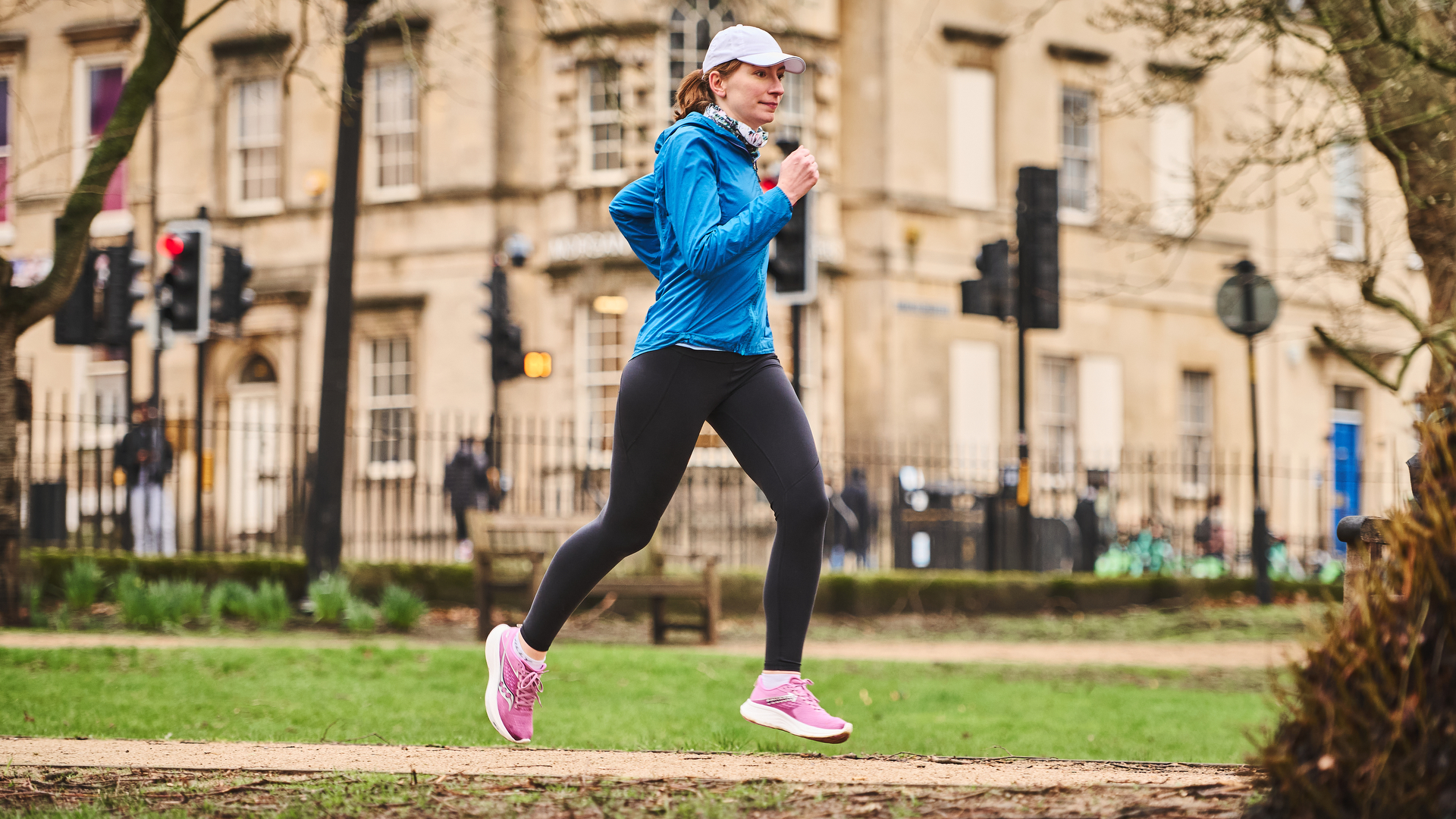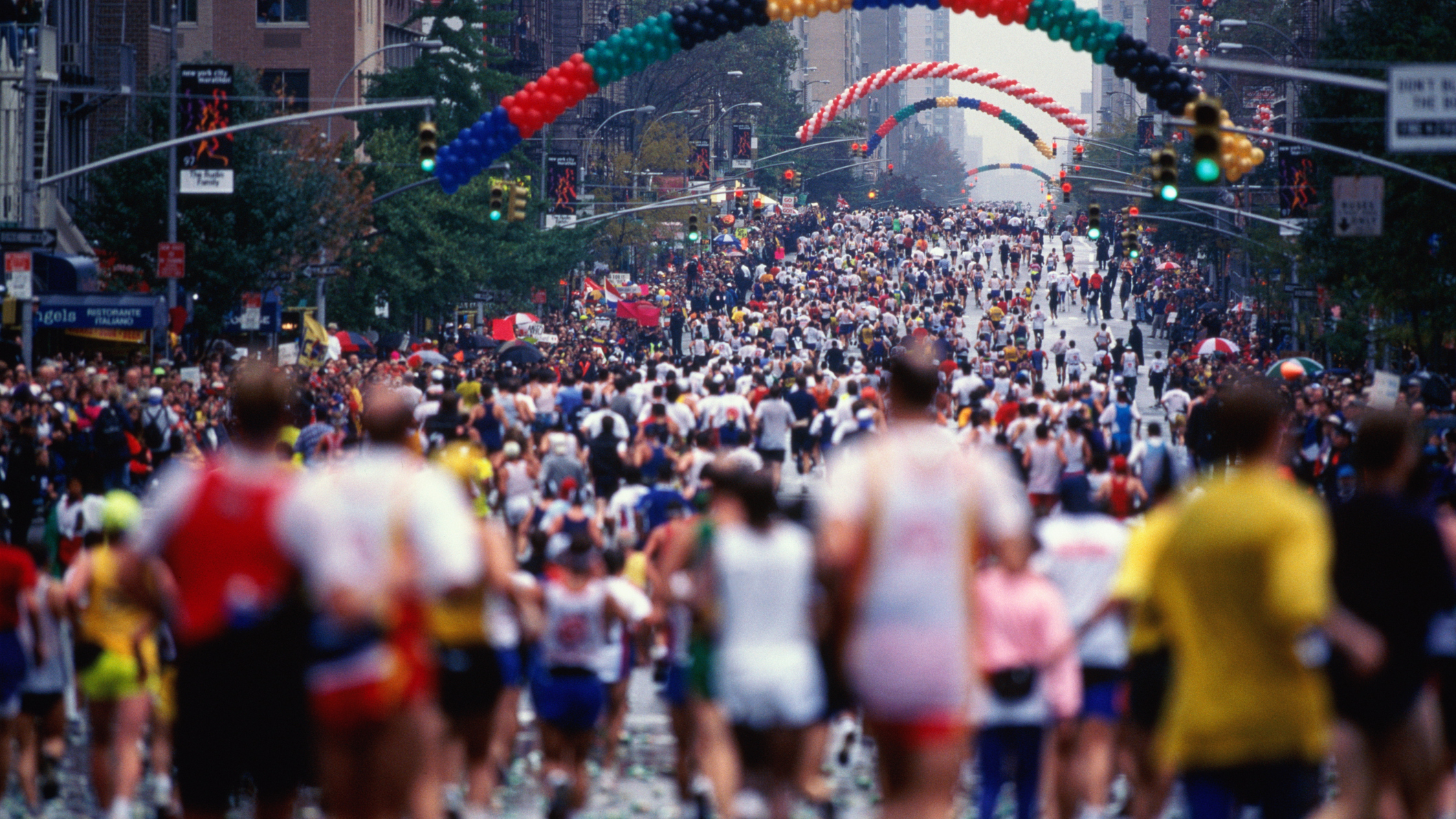How to run a sub three-hour marathon: achieve that Holy Grail
A trio of experts give their advice on how to achieve the impressive goal of completing a marathon in under three hours

Alongside a 40-minute 10k, a sub 3-hour marathon is a sort of Holy Grail for road runners. This is a challenging target that stretches many to their limits, yet with the right mindset, a well-chosen training plan and a hefty dose of gumption, it's more than achievable.
If you've already put yourself through the wringer and have achieved a 3:30 marathon, you may be eying the prize of a sub 3. But where do you even begin to lift your pace to the extent where you can conquer the not inconsiderable 26.2-mile (42.1km) distance in the time it takes to watch Oppenheimer? Well, it's time to take your training to DEFCON 1.
This is because, to run a sub three-hour marathon, you need to achieve a minimum average pace of 6:50 minutes per mile, or 4:15 minutes per kilometer. This may seem like an explosive increase in pace, yet if you lace your road running shoes up consistently and stick to your plan, you can get there.
We asked our running experts to reveal their tips and recommendations for runners who would like to train with the aim of achieving a marathon that dips under three hours.
Meet the expert

Fiona loves running in all its forms. Based in the Scottish Central Belt, just a stone's throw from the Southern Highlands, she has a wealth of excellent road and trail running right on her doorstep.
Today's best deals
How to run a sub three-hour marathon
- You need to develop muscular strength in order to take on a sub 3-hour marathon
- Runners who regularly run 50 miles a week should be able to hit the target
- Your training plan should be 16 weeks long and be preceded by 4 weeks of strength training

For many runners, the biggest question will be: Can I run a sub three-hour marathon?
Arj Thiruchelvam, head coach at Performance Physique, says that running a sub three-hour marathon requires aerobic endurance and also the ability to maintain faster threshold paces for longer.
He says: "To do this, runners need to develop muscular strength to prevent the breakdown of the body, not only during the race but in the months of training leading up to it.
All the latest inspiration, tips and guides to help you plan your next Advnture!
“It does depend on where runners are starting from but if they train sufficiently and with determination, a sub three-hour marathon is possible."
Christian Allen of Runners Need , who holds an England Athletics Leadership in Running Fitness qualification, says: "Runners who already run at least 50 miles a week have a better chance of reaching the target and, generally, only the top five per cent of runners tend to hit this time.
"It’s those runners who are most dedicated and consistent in their training who are most likely to be able to achieve a sub three-hour marathon."
Taking a more upbeat view, Rachael Woolston, a coach and founder of Girls Run the World, believes that “anyone, in theory, can achieve a sub three-hour marathon”. But, like Thiruchelvam, she reports that key to the goal is “the right training, in terms of volume, consistency and specificity to your age”.
She adds: “It’s also important to consider other factors such as your running history, exercise background and how steadfast you are to achieve this goal. This will give you an idea of how long it will take to train for a sub three-hour marathon.
“But in general terms, the marathon plan should be a minimum of 16 weeks, with ideally a four-week block of strength building before you go into the plan.”
More tips for running a sub three-hour marathon
- Training should include tempo and interval runs
- Tempo runs enable you to hold a hard pace for longer
- Interval training creates speed and develops a quick turnover of the legs

Woolston reveals the training commitment required by runners to achieve the sub three-hour marathon target: “The marathon training plan should include a minimum of four runs per week but you’re probably looking at six days a week. It should include tempo and interval runs, as well as the long run and recovery runs.
“Tempo runs help to develop your ability to run at lactate threshold. Or, in simpler terms, to hold a hard pace without fatiguing for longer, which is what you will need to achieve any marathon target time, whether that’s sub three hours or sub five hours.
“Meanwhile, interval training creates top-end speed and develops a quick turn over of the legs.”
Fine tune your long run
- The regular long run is the key to a sub three-hour marathon
- In training, start around a minute to 90 seconds per mile slower than the goal pace
- Between weeks 8 to 13, start to build in your race pace

The final key to a sub three-hour marathon goal is your regular long run. “At the beginning of training plan, these long runs should be done at a pace that’s about a minute to 90 seconds slower than your goal marathon pace," says Woolston. “This helps you to build your aerobic endurance base and also ensures your joints and muscles build strength gradually to prevent injury.
“Then, as you enter peak phase, in weeks eight to 13, these runs will incorporate some segments of the run at race pace. For instance, you could run 18 miles with the final three miles at race pace.
“Or you could do seven miles at an easy pace and then begin cycling through a mile on, a mile off at race pace. This enables you to also practice those all-important nutrition and psychological strategies that are vital for you to achieve your goal.”
Add in an 'easy' run for marathon training
- Easy runs are deliberately run at a much slower pace
- These easy sessions should be run around 90 seconds to two minutes slower than usual pace

The 'easy' run as part of a sub three-hour marathon training plan might also be referred to as a 'recovery' run.
But Woolston says: "The ‘recovery’ or easy runs (which is a misnomer as they often feel harder than the so-called ‘hard’ sessions) are deliberately run at a much slower pace.
“Easy sessions should be run at around 90 seconds to two minutes slower than your usual pace, which feels incredibly hard to do. But this helps your muscles to recover and also develops your ability to run on tired legs and, importantly, to be disciplined about your pace.
“What I see is that the majority of marathon runners miss out on their goal by starting off too fast."
Expert advice: the sub three-hour marathon

Cadence matters
Allen offers further tips for a sub three-hour marathon. He says: “Generally, a high cadence –steps per minute – and not over-striding will help with a higher leg turnover and efficiency, so runners should practise this in their training.
“You also want to practise your race nutrition and hydration, too, because if you’re not adequately fuelled your body will tire and it can jeopardise your chances of hitting your goal. It’s so important that you do this during your training, to understand what does and doesn’t work for your body.
“You don’t want to be trying anything new on race day, so you may also want to look into what nutrition is being offered at aid stations to see if this works for you ahead of time, or if you need to take your own.”
Avoid injury
To prevent injury, Woolston recommends that a marathon training plan should include strength training to help keep the body mobile and strong, while aiming to avoid injury.
She says: “These factors are particularly important if you are an older runner. Strength work will help you to maintain a running economy as you fatigue, which will equate to faster times.”
Which marathon should I aim for?
- Seek a flatter course when aiming for a marathon PB
- Look for IAAF Gold label events, as these will be closed to traffic and accurately measured

While a marathon distance is a set 26.2 miles or 42.1km, each course is different and includes a range of terrain and elevation. Most experts recommend that to achieve a fast marathon time – or your own PB – it’s worth seeking out a flatter course.
Woolston adds her valuable tips: “If you a looking for a marathon to achieve a personal best, search for the flattest race with the least amount of turns.
"A good bet is to look for an IAAF (International Amateur Athletic Federation) Gold label event, which means the course will be accurately measured and be closed to traffic and feature elite athletes, so it will be a fast course.”
Hire a coach for your running goal
- Many runners benefit from being coached, especially when pushing their limits
- A coach can build a personalized programme that fits around your life

Thiruchelvam believes that many runners will benefit from being coached. He says: “Having a coach will give you all the sessions and support you need to best achieve a set running goal.
“You can download a free marathon training programme on the internet but your own coach will build a personalised programme for you that adapts around your life, your current running paces and the challenges that you will face during the journey.
“Understanding the science behind endurance running is the difference, particularly when you move to the faster times.”
Conclusion
Your success for running a sub three-hour marathon will depend on your starting point and then your dedication to the build up and training for a race. It's worth thinking about the marathon that you aim for because some course are faster than others. Also, it could be that a running coach will be a good way to guide you towards this Holy Grail of marathon times.
- The best trail running shoes: tackle tough off-road routes with confidence

Fiona Russell is a widely published adventure journalist and blogger, better known as Fiona Outdoors. She is based in Scotland and is an all-round outdoors enthusiast with favorite activities including trail running, mountain walking, mountain biking, road cycling, triathlon and skiing (both downhill and backcountry). Aside from her own adventures, Fiona's biggest aim is to inspire others to enjoy getting outside and exploring, especially through her writing. She is also rarely seen without a running skort! Find out more at Fiona Outdoors.
